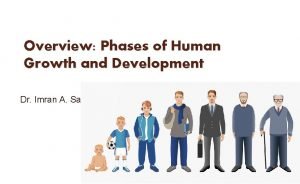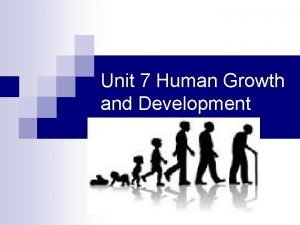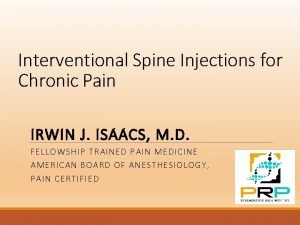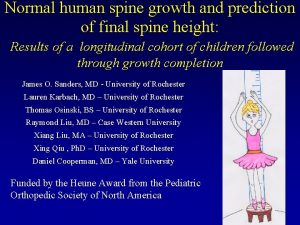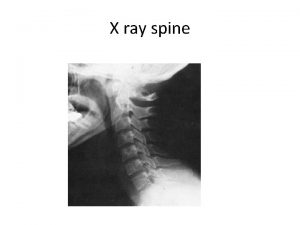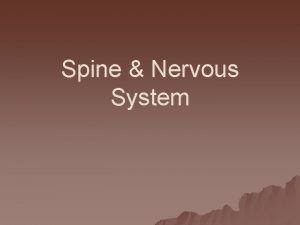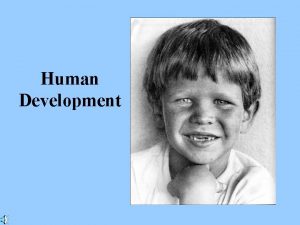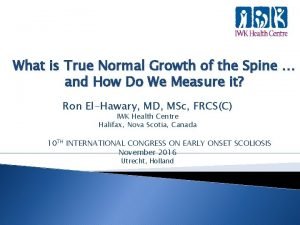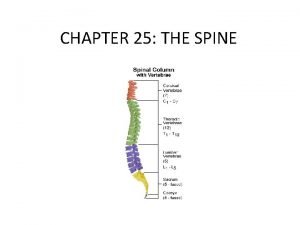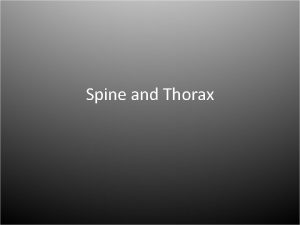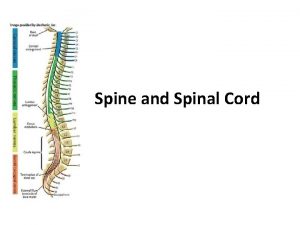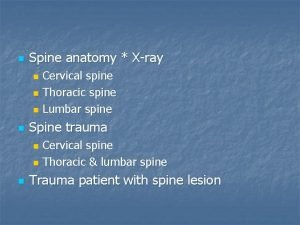Normal human spine growth and prediction of final

















- Slides: 17

Normal human spine growth and prediction of final spine height: Results of a longitudinal cohort of children followed through growth completion James O. Sanders, MD - University of Rochester Lauren Karbach, MD – University of Rochester Thomas Osinski, BS – University of Rochester Raymond Liu, MD – Case Western University Xiang Liu, MA – University of Rochester Xing Qiu , Ph. D – University of Rochester Daniel Cooperman, MD – Yale University Funded by the Heune Award from the Pediatric Orthopedic Society of North America

Why Does Longitudinal Matter? • To date, our primary sources of spinal growth information have come from cross sectional data using small samples of normal children. • Cross sectional studies blunt the marked changes occurring during the adolescent growth spurt. Growth Studies: Cross Sectional Longitudinal Data Collection Straight forward Can be done quickly Relatively inexpensive Challenging Takes decades Expensive Statistical Analysis Routine techniques Specialized expertise Missing data Not problematic Advanced techniques required Utility Good for broad information Blunts individual patterns Needed for subject specific information

Cross Sectional:

T. Wingate Todd, MD • Funded by Brush and Bolton Foundations, started the largest and most complete extant collection of skeletal radiographs following a longitudinal cohort of children through their growth. • Healthy Cleveland Children 1929 -1942 • Examined q 3 mo till 1 yr old, q 6 mo till 5 yrs then annually near birthday. • Each visit had: – Radiographs of left hand, elbow, hip, shoulder, knee, foot – Anthropometrics – height, weight, segment measurements

Methods – Part 1 • Identified subjects clearly completing their growth (<1 cm/year at the final visit). • Estimated the timing of their individual peak height velocity (PHV) using 1 st derivative of cubic spline curve fitting. • The timing before and after the PHV in years was compared to the percentage of final height.

Results (Basic): • 54 subjects had completed their growth at the study terminus (35 f, 19 m). • Age at first data: – Girls 2 to 10 yrs – Boys from 7. 5 to 11 yrs • PHV timing – Girls 9. 7 to 13. 4 yrs average 11. 3 years – Boys 11. 7 to 14. 3 yrs average 13. 0 years. • Final heights – Girls 151 to 175 cm (average 163. 4 cm) – Boys 169 to 183. 9 cm (average 177 cm)

Plotted PHV vs. %Final Ht (reciprocal of multiplier) Range <2 yrs Heights measured q 1 yr

Finding 1: 90% final growth corresponds to the PHV and growth standardized by it is very consistent across all children of both sexes

Methods – Part 2 • Compared anthropometrics with concurrent xrays to identify the heights of S 1, T 1, and C 1. • Compared these to percentage of sitting height minus the head height. • Used these values to calculate multipliers for spinal growth.

Finding 2: C 1 -S 1 Length is a consistent proportion of Sitting height minus Head height.

Finding 3: Multiplier vs Age have wide distributions.

Finding 4: Multipliers standardized to the PHV have very tight distributions. And are FAR better than age derived multipliers

Finding 5: Spinal growth (T 1 -S 1) is very rapid during the growth spurt. Girls Boys Childhood 1. 5 cm/year Growth Spurt 2. 5 cm/year Terminal Growth 0. 4 cm/year Higher than reported with prior cross sectional studies

Finding 6: When final height is 90% final, the spine is only 85% final

Limitations • This is 2 D, not 3 D data – does not account for the sagittal plane. • Have only localized C 1, T 1, S 1 and does give information on individual FSUs or lumbar/thoracic segments • This can be supplemented with high quality cross sectional data. • Multipliers still need to be identified for younger children.

Summary • We now have useful multipliers of spinal growth from mid childhood through adolescence. – Predict correction with growth modification – Predict final spine length with fusion – Comparison with normal for growing rods • Timing relative to the growth spurt and not by age is what counts. • Growth of the spine is more rapid during the growth spurt than previously found. • We can use these same methods to look at spinal growth in younger children.

Thank you!
 Bid rent theory ap human geography
Bid rent theory ap human geography Relative growth rates
Relative growth rates Shoot system
Shoot system Primary growth and secondary growth in plants
Primary growth and secondary growth in plants Chapter 35 plant structure growth and development
Chapter 35 plant structure growth and development Growthchain
Growthchain Geometric vs exponential growth
Geometric vs exponential growth Neoclassical growth theory vs. endogenous growth theory
Neoclassical growth theory vs. endogenous growth theory Difference between organic and inorganic growth
Difference between organic and inorganic growth Stages of human growth and development pictures
Stages of human growth and development pictures Growth and development principles
Growth and development principles Human growth and development
Human growth and development Emotional changes in childhood
Emotional changes in childhood Social changes in late adulthood
Social changes in late adulthood Chapter 7 human growth and development
Chapter 7 human growth and development Chapter 28 head and spine injuries
Chapter 28 head and spine injuries Chapter 21 caring for head and spine injuries
Chapter 21 caring for head and spine injuries Cervical facet referral pattern
Cervical facet referral pattern











